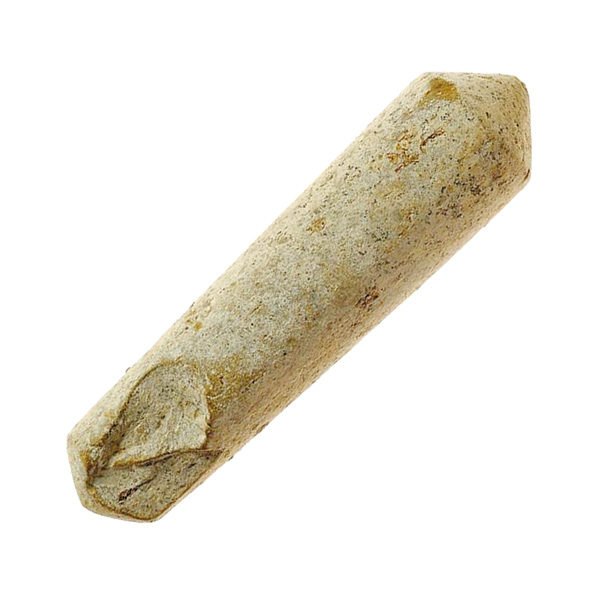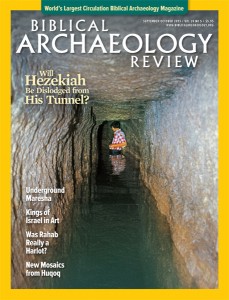
A. Piece of scribal chalk
B. Neolithic match stick
C. Spice-grinding pestle
D. Ceramic rolling pin
E. Cultic phallic symbol
Answer: (B) Neolithic match stick
They may not have been found in a cardboard cover with a restaurant’s name printed on it, but new research suggests that a collection of long, cylindrical ceramic objects excavated at the Neolithic site of Sha’ar HaGolan in northern Israel are the world’s earliest match sticks, dating to around 5500 B.C.1 Measuring around 2 inches long or less, these ceramic objects with conical ends (as well as stone versions like them) functioned as “drill bits” on mechanical drills used to produce fire in the Neolithic period, as pyrotechnology advanced.
Archaeologist Naama Goren-Inbar, who proposed the “match” theory in a recent article with colleagues, explains that the drill bits were likely attached to the rotating shaft or spindle of a drill mechanism. The drill was placed in the socket of a corresponding fireboard of stone or pottery (examples of which are known from nearby archaeological sites). When rotated rapidly, the friction of the drill bit against the fireboard could create intense heat energy and spark a fire in the wood dust or other tinder placed on the board. Grooves, striations and polished and darkened areas observed on the drill bits are indicative of wear from such use.
Already a library member? Log in here.
Institution user? Log in with your IP address.

